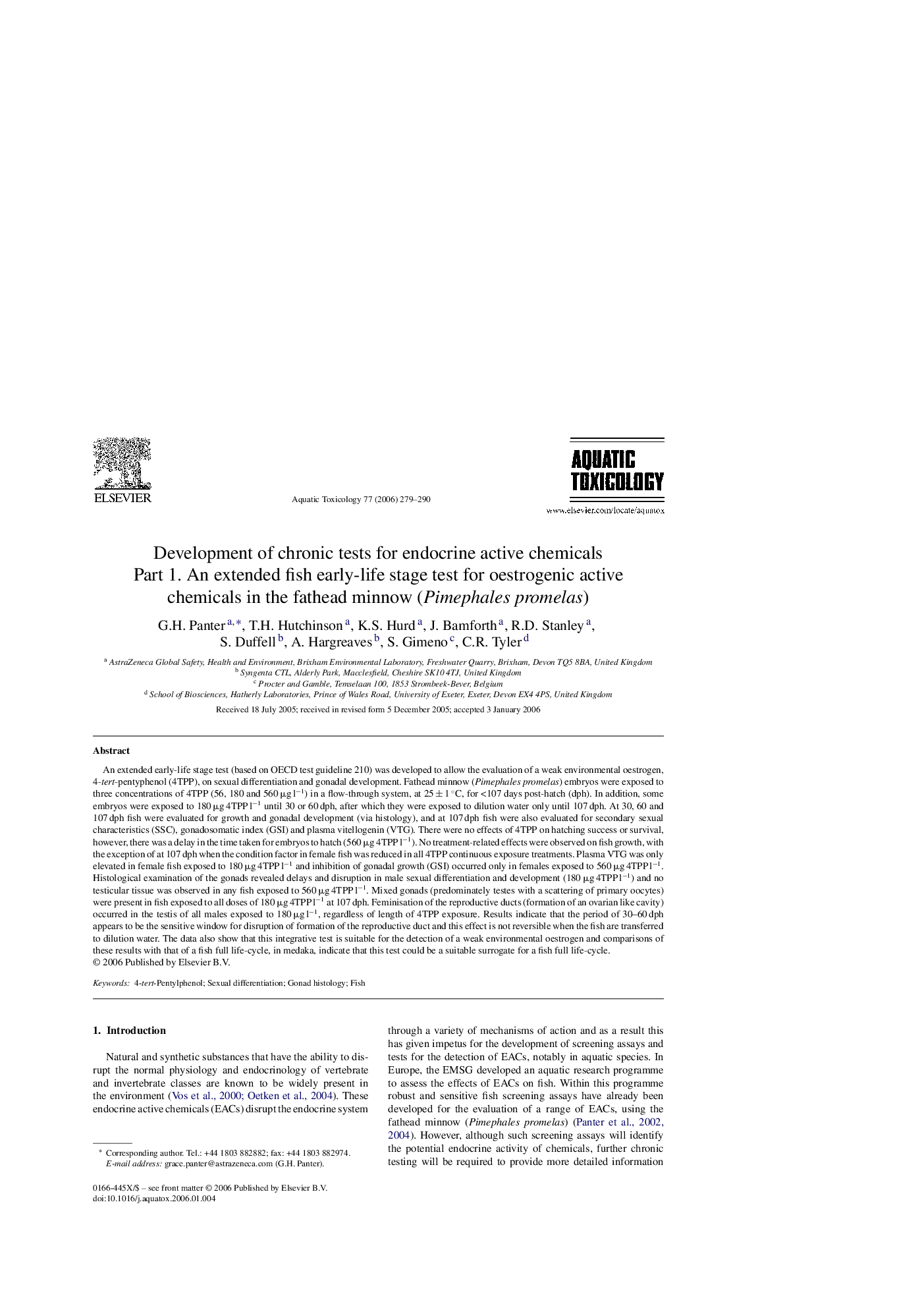| Article ID | Journal | Published Year | Pages | File Type |
|---|---|---|---|---|
| 4531394 | Aquatic Toxicology | 2006 | 12 Pages |
An extended early-life stage test (based on OECD test guideline 210) was developed to allow the evaluation of a weak environmental oestrogen, 4-tert-pentyphenol (4TPP), on sexual differentiation and gonadal development. Fathead minnow (Pimephales promelas) embryos were exposed to three concentrations of 4TPP (56, 180 and 560 μg l−1) in a flow-through system, at 25 ± 1 °C, for <107 days post-hatch (dph). In addition, some embryos were exposed to 180 μg 4TPP l−1 until 30 or 60 dph, after which they were exposed to dilution water only until 107 dph. At 30, 60 and 107 dph fish were evaluated for growth and gonadal development (via histology), and at 107 dph fish were also evaluated for secondary sexual characteristics (SSC), gonadosomatic index (GSI) and plasma vitellogenin (VTG). There were no effects of 4TPP on hatching success or survival, however, there was a delay in the time taken for embryos to hatch (560 μg 4TPP l−1). No treatment-related effects were observed on fish growth, with the exception of at 107 dph when the condition factor in female fish was reduced in all 4TPP continuous exposure treatments. Plasma VTG was only elevated in female fish exposed to 180 μg 4TPP l−1 and inhibition of gonadal growth (GSI) occurred only in females exposed to 560 μg 4TPP l−1. Histological examination of the gonads revealed delays and disruption in male sexual differentiation and development (180 μg 4TPP l−1) and no testicular tissue was observed in any fish exposed to 560 μg 4TPP l−1. Mixed gonads (predominately testes with a scattering of primary oocytes) were present in fish exposed to all doses of 180 μg 4TPP l−1 at 107 dph. Feminisation of the reproductive ducts (formation of an ovarian like cavity) occurred in the testis of all males exposed to 180 μg l−1, regardless of length of 4TPP exposure. Results indicate that the period of 30–60 dph appears to be the sensitive window for disruption of formation of the reproductive duct and this effect is not reversible when the fish are transferred to dilution water. The data also show that this integrative test is suitable for the detection of a weak environmental oestrogen and comparisons of these results with that of a fish full life-cycle, in medaka, indicate that this test could be a suitable surrogate for a fish full life-cycle.
